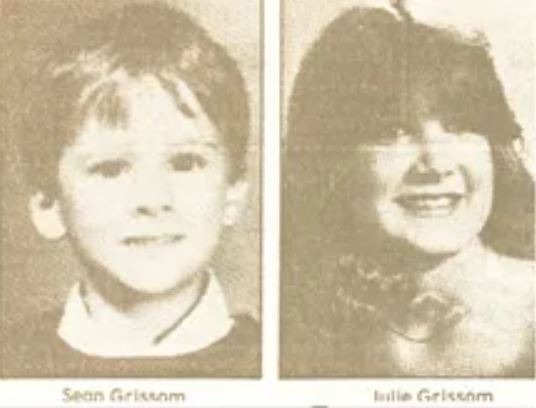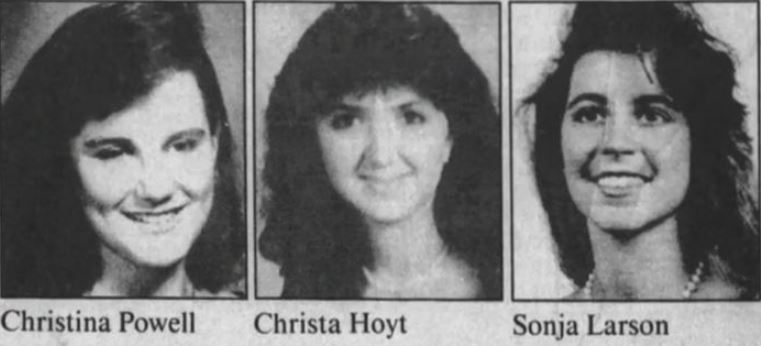ABC’s ’20/20: Gainesville’ is a two-hour special event that chronicles the tale of serial killer Daniel Rolling, better known as The Gainesville Ripper, who killed a total of eight people in his lifetime. Having committed most of his offenses over four days in late August 1990, the slayings he’s most known for are of five students – one from Santa Fe College and four from the University of Florida. Daniel later confessed to sexually assaulting a few of them while committing his haunting murders. So, if you’re curious to know who the victims of this notorious criminal were, we’ve got you covered.
Grissom Family Triple Homicide
On November 4, 1989, when Danny Rolling was let go from his job at a local restaurant in Shreveport, Louisiana, his hometown, he broke into a house and killed its three residents — 24-year-old Julie Grissom, her 8-year-old nephew, Sean, and her 55-year-old father, William “Tom.” They were attacked as they were preparing for dinner, and like most of Daniel’s later victims, Julie was mutilated, cleaned, and posed on the bed with her legs wide open. She had bite marks on her remains as well. This triple homicide was unsolved until Danny himself took responsibility for it by giving a handwritten confession and apology in 2006.

Daniel’s next victim of sorts was his abusive father, a Shreveport police officer named James Rolling, whom he shot in May 1990 after a family argument. James survived despite his son’s full intentions of ending his life, but he forever lost the use of an eye and an ear. While James was recovering, Daniel fled the city and made his way through Kansas and Florida, eventually arriving in Gainesville. Throughout this time, the offender continued his theft and robbery spree, which he had begun as a teenager or young adult and never managed to leave behind. It was in Gainesville that Daniel became a serial killer. Hence, his moniker of The Gainesville Ripper.
Five College Students in Gainesville
After settling into a campsite in the wooded area behind the University of Florida, in the early morning hours of August 24, 1990, Daniel slipped into the apartment of 17-year-old freshmen Christina Powell and Sonja Larson. Seeing Christina asleep on the couch, the killer first made his way into the bedrooms, where he attacked a sleeping Sonja, taping her mouth and stabbing her to death. Then, he made his way back to Christina, where he gagged her, bound her wrists, cut off her clothes, forced her face-first onto the floor, and then sexually assaulted her before stabbing her as well. Daniel left both bodies in provocative positions.

The next evening, on August 25, Daniel broke into the house of Christa Leigh Hoyt, an 18-year-old Santa Fe Community College student, using a knife and a screwdriver. He’d peeked into her bedroom a few days earlier. However, when he realized that no one was home, instead of leaving, he waited for the teenager to return, placing her in a chokehold as soon as she did. When Christa stopped fighting back, Daniel taped her mouth and wrists and then led her onto a bed. Horrifically, not only did he rape Christa from behind before stabbing her in the back, he even decapitated her and settled her head on a shelf facing her remains.

On August 27, the killer resurfaced for a final time at the residence of two 23-year-old University of Florida students, Manuel Taboada and Tracey Paules. Daniel killed Manuel quickly despite the apparent fight he put up before making his way to Tracey’s room, where he overpowered her and then followed his brutal pattern of taping, cutting, raping, and killing. Unlike Christina, who he stabbed five times in the back, or Christa, whose heart was ruptured, The Gainesville Ripper stabbed Tracey thrice in the same position. This time, there were no mutilations, but he did clean and pose the young woman in a sexual manner.
Apart from Manuel, his father, or the two males from the Grissom family, all of Danny Rolling’s victims were petite Caucasian brunettes with brown eyes. In early September 1990, Daniel, having skipped town, was arrested in Ocala for a botched burglary of a grocery store at gunpoint. But thanks to the fact that he hadn’t discarded the tools he had used in the Gainesville murders, the authorities could link him to the crimes. His campsite in the woods behind the university also yielded an audiotape about the killings. Even DNA evidence linked him to the scenes. In short, Daniel could no longer escape the consequences of his heinous actions.
Read More: When and How Did Danny Rolling Die?


You must be logged in to post a comment.